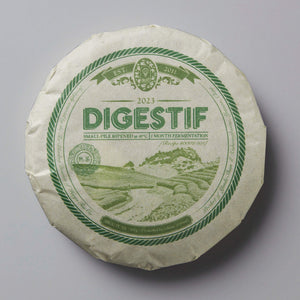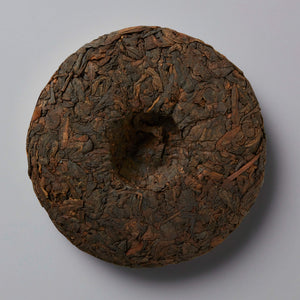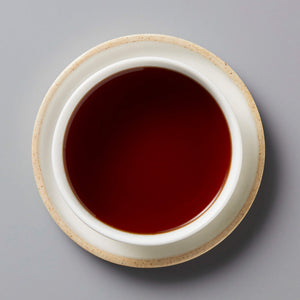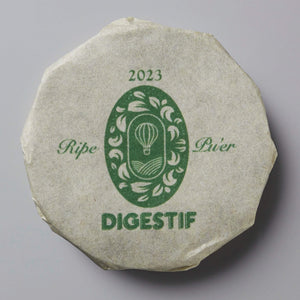Your Cart is Empty




2023 DIGESTIF | shou pu'er
$3.00 - $36.00
The newest iteration of DIGESTIF is a shou (“ripe”) pu’er tea from Gedeng shan (shan = mountain), Xishuangbanna, Yunnan province, China, pressed in spring 2023 from material harvested and fermented in Autumn 2022. Produced with material normally destined for sheng pu’er (i.e. quality, whole-leaf material rich with buds), this shou was first processed to sheng: hand-plucked at a 1:3 (1 bud : 3 leaves) standard, sun-withered, stir-fried in large woks to partially fix (an important phase that separates it from green tea, where tea is fully fixed), sun-dried, and then fermented in small batches of approximately 10 kg. The tea was then piled into small bamboo baskets, wet thoroughly, allowed to ferment (or “cook” / “ripen”) for 7 days, turned and tossed with pitchforks, then re-wet and ripened again each week over 5-6 weeks. Finally, the material was spread over mats, dried, and sorted before resting for 1 year and, finally, pressed into these cakes. Sounds like a lot, and it is—shou pu’er, so often considered a “lesser” tea to which undesirable material is relegated, is both a challenging artform to perfect and a financial risk for producers to use high quality leaf for. Our Xishuangbanna producer, Xiaohui, exclusively sources leaf from quality gardens for his teas, incentivizing a very careful production.
The raw material for DIGESTIF comes from trees aged 90-150 years on Gedeng shan, one of the 6 “old” tea mountains east of the Lancang river in Xishaungbanna (and the source material for our pressed white teas). Known to produce tea with particularly high fragrance, material from this mountain is well-suited to small batch shou, producing rich notes of camphor, menthol, spice, wood, and herbs as the tea ages. Wo dui ("pile scent") is surprisingly minimal on this lot after a mere year of rest, speaking to the quality of the material.
The compression on this tea is middle-low, meaning ambient microbes in the air can access the tea and further its development. This shou comes at a competitive price point and delivers on its promises: no pile scent, fresh amaro-like character, plenty of sweetness, and rich, inky body. Shou is said to be good for digestion (unsubstantiated)—but we like it steeped strong after a meal. Steep small-format and be sure to rinse (wash with hot water and instantly pour off) for an experience that gives and gives, or grandpa for a solid 7-8 mugs' worth.
VINTAGE — AUTUMN '22 (PRESSED IN SUMMER '22)
STYLE — SHOU ("RIPE") PU'ER
CULTIVAR — HEIRLOOM DA YE ("BIG LEAF")
REGION — XISHUANGBANNA, YUNNAN, CHINA
LOCALE — GEDENG SHAN
ELEVATION — 1430 METERS
PRODUCER — XIAOHUI QUAN
STEEPING PARAMETERS
(use freshly boiled spring water)
modern, large format
4 grams — 210°F (99°C) — 1 minute
traditional, small format
7 grams — 210°F (99°C) — 10 seconds
(1-2 rinses recommended)
(1-2 rinses recommended)
+ 15-20 seconds each additional steep




